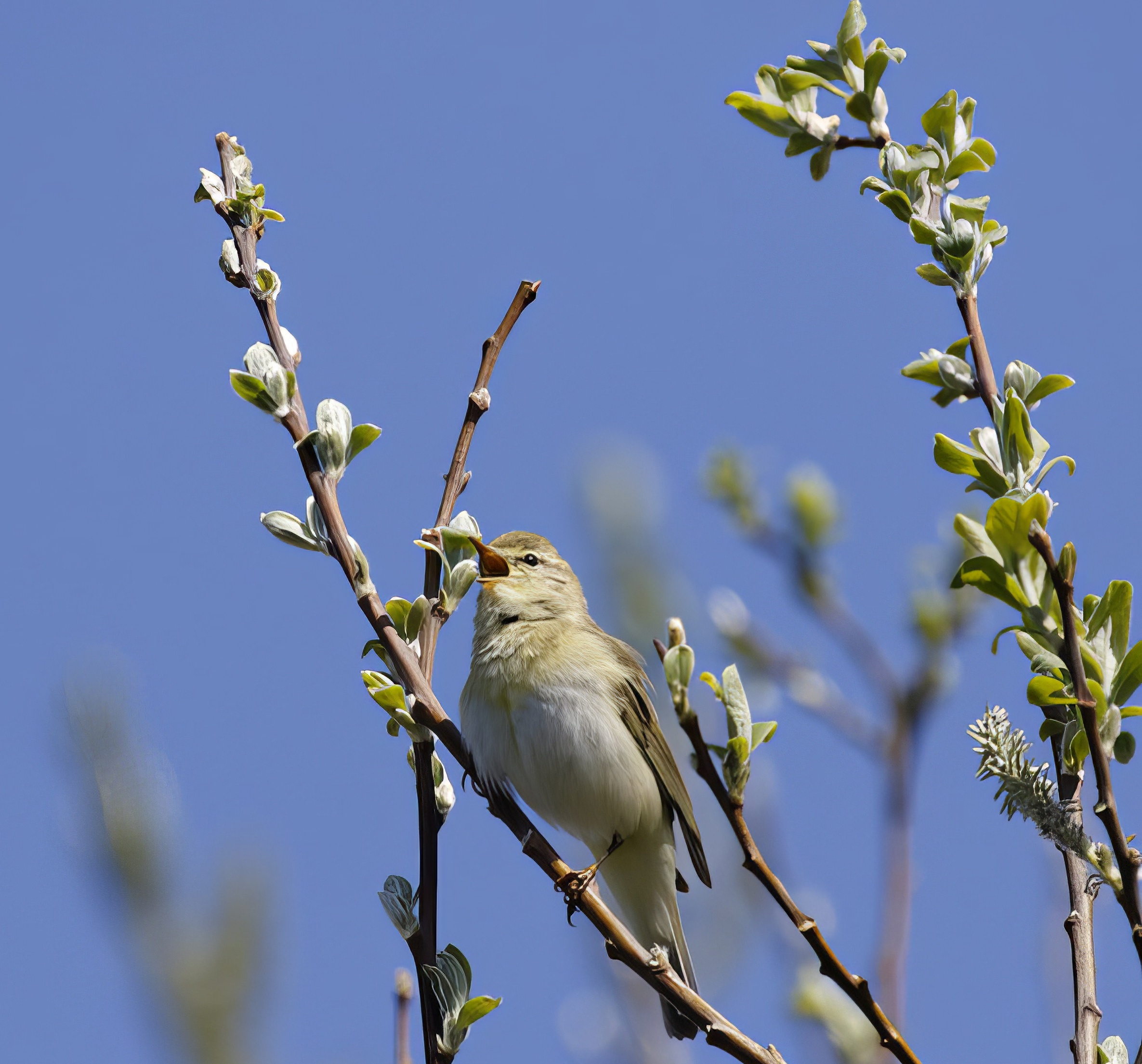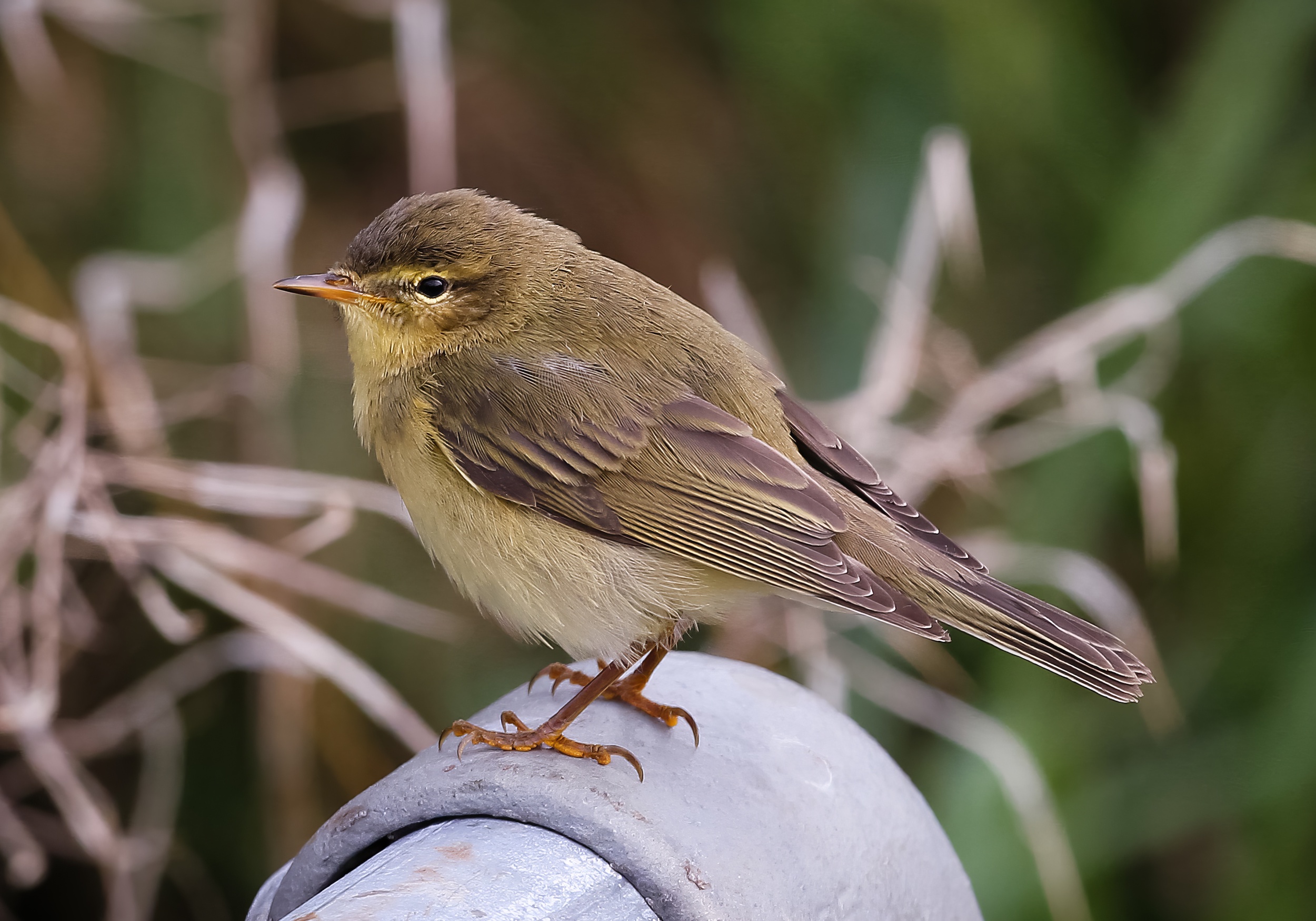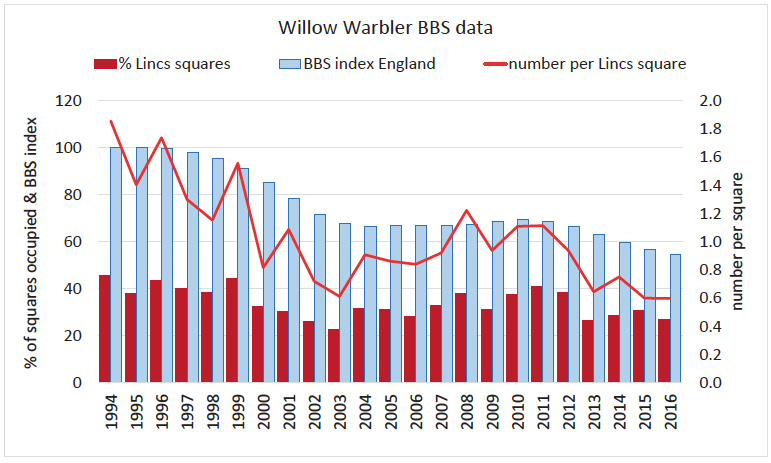Willow Warbler Phylloscopus trochilus
Nominate form a familiar summer visitor and passage migrant but declining as a breeding bird. Northern form acredula scarce passage migrant to the UK.


It is a fact of life that the population of species change through time for all sorts of reasons. In the Atlas period in the 1980s, Willow Warbler was by far and away the commonest breeding warbler in Lincolnshire with an estimated population of 50,000-59,000 pairs. The APEP4 weighted estimate in 2016 was 14,000 pairs which sees Willow Warbler sliding down the scale to number five in the Lincolnshire warbler league table, from its former number one position; it retains number one spot for Britain as a whole. The BTO Lincolnshire BBS index (see below) shows that the decline of the species here is worse than other parts of the country. It remains widespread but has thinned out and become scarce in many areas. It is interesting that this decline is mirrored across south-east Britain but not in the north-west, nor in Scotland. The reason for the decline is thought to be related to decreasing productivity of young in south-east Britain but problems on migration routes have not been ruled out. Why Chiffchaff, P. collybita is increasing in Lincolnshire while Willow Warbler is suffering, points to the intriguingly delicate balances that exist between success and failure for seemingly similar species. It seems likely that as a trans-Saharan migrant the pressures on Willow Warbler are greater. Will it adapt its lifestyle and bounce back? Readers 50 years hence will hopefully know the answer! There is no accepted record of the northern form of Willow Warbler, P. t. acredula having occurred in Lincolnshire.
Willow Warbler is not frequent enough for a Lincolnshire index to be generated, but the trend for England as a whole has arguably bottomed out in the last few years although the population has fallen by 40% between 1995 and 2016. The raw BBS data (see chart) nevertheless illustrates the downward trend of distribution and, especially, numbers. The trend mirrors that for England as a whole, and the contrast with that for Chiffchaff is vivid (BBS data courtesy of the BTO).

The BTO ringing database shows four interesting Willow Warbler recoveries or retraps. Among these was an adult male ringed on June 10th 2012 at Donington-on-Bain. This bird has since returned to that site in 2014, 2016 and 2017 and is now at least five years old. A first year bird ringed in Fishtoft on 14th August 2017 was retrapped in Charente-Maritime, France, on August 23rd having travelled 755 km in nine days. Lincolnshire-ringed birds have been recovered in Belgium (2), Finland (1), Germany (2), Netherlands (1), NOrway (1), Portugal (5) and Spain (4). Birds ringed abroad in Belgium, France, Spain and Sweden have been retrapped in the county.
(Account prepared March 2019, updated with reference to the new Birds of Lincolnshire (2021) October 2022)
